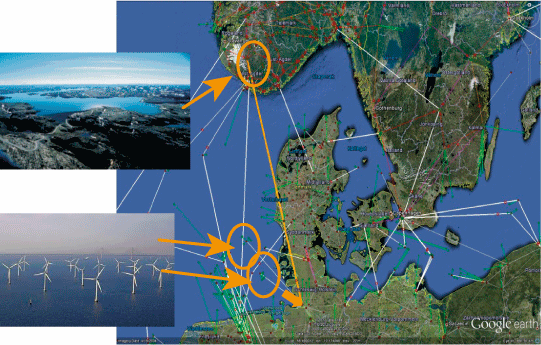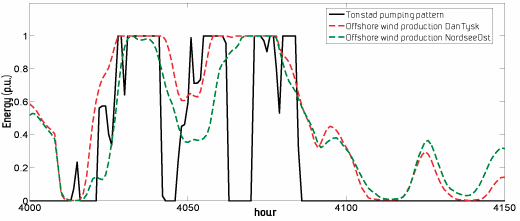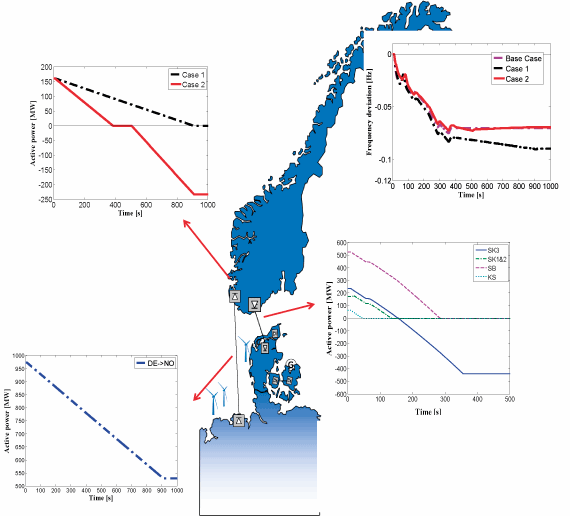
TWENTIES - Transmitting wind
Balancing Control Framework
Balancing Control Framework
The objective of this work is to investigate the combined effect of variable power production from offshore wind farms in the North Sea and the use of pumped storage facilities at hydropower stations in Norway on the Nordic frequency.
- Two different pumped storage cases are investigated for a power exchange situation between Norway and Continental Europe, which illustrates the effect of wind power variability. The performance of primary and secondary controllers to restore frequency quality is analysed.
Offshore wind and pumped storage: Potentials and correlations
- Large development of offshore wind power in the North Sea (in 2020 : > 35 GW and 2030: 96 GW1)
- Large potential for hydro power generation in Norway with pumped storage (9 GW2)
- Pumping is influenced by price difference between system price and water value (Water in the reservoir has a 'value' since it can be storage and used to generate power. ‘Water value’ is the 'marginal cost' of generation for hydropower plants with reservoirs, and is defined as the increase in total value if one unit of water is added to the reservoir. It therefore depends on reservoir level)
- Pumped storage occurs during high wind production. Wind energy is used to pump water upstream in the reservoirs, which is 'stored' as energy

a) NorGer HVDC cable (highlighted in orange)

b) German offshore wind power and pumping pattern at Tonstad hydropower station in Norway. These two are connected by the NorGer HVDC link in the simulations
Results – key simulation responses
Model description
- Nordic and Continental European synchronous system
- Primary control: 6% droop and ±0.2 Hz
- Secondary control: LFC on generators and HVDC links
- Wind farms and NorGer (See Figure a above) HVDC link power flow are modeled as time varying negative loads
- Initial power flow data are taken from NordPool spot market data from 11 November 2010
- NorGer flow and pumping data taken from market analysis
Studied scenarios
- Loss of 2000 MW offshore wind power generation in western Denmark
- Power flow variation from Germany to Norway (NorGer): 970 MW 530 MW
- Initial pumping load at Tonstad: 160 MW
- Two cases
- Case 1: Reduction and stop of pumping (Slow)
- Case 2: Stop of pumping (Fast) and change to generation

Conclusions
- Large offshore wind production variations in North Sea will correlate with variable power flows between Continental Europe and Nordic region.
- Secondary control [Ramp Following Control (RFC) together with Load Frequency Control (LFC)] in the Nordic region and West Denmark can contribute to power system balance restoration. However, RFC will have an impact on the Nordic frequency quality.
- The rate of change of pumped storage in hydropower stations will introduce an additional load, which also will affect the Nordic frequency. The relative rate of change in pumping stations with respect to the variations of wind power and flows between the Nordic and Continental Europe system / North Sea will also affect the frequency.
- Frequency deviations found in this study, assuming realistic wind power and power flows variations and pumping rates, although significant are still within the allowed limits in all the cases studied.
- Offshore wind variability, pumped storage loads and power flow on the HVDC links connected to the Nordic power system are likely to have significant influence on the Nordic frequency quality in the future.